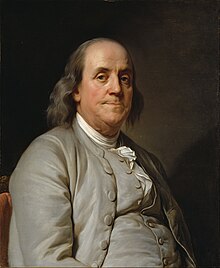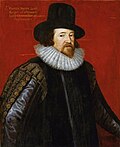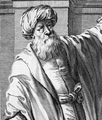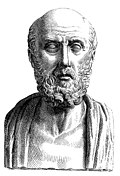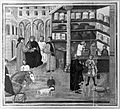Portal:History of science
The History of Science Portal
The history of science covers the development of science from ancient times to the present. It encompasses all three major branches of science: natural, social, and formal. Protoscience, early sciences, and natural philosophies such as alchemy and astrology that existed during the Bronze Age, Iron Age, classical antiquity and the Middle Ages, declined during the early modern period after the establishment of formal disciplines of science in the Age of Enlightenment.
Science's earliest roots can be traced to Ancient Egypt and Mesopotamia around 3000 to 1200 BCE. These civilizations' contributions to mathematics, astronomy, and medicine influenced later Greek natural philosophy of classical antiquity, wherein formal attempts were made to provide explanations of events in the physical world based on natural causes. After the fall of the Western Roman Empire, knowledge of Greek conceptions of the world deteriorated in Latin-speaking Western Europe during the early centuries (400 to 1000 CE) of the Middle Ages, but continued to thrive in the Greek-speaking Byzantine Empire. Aided by translations of Greek texts, the Hellenistic worldview was preserved and absorbed into the Arabic-speaking Muslim world during the Islamic Golden Age. The recovery and assimilation of Greek works and Islamic inquiries into Western Europe from the 10th to 13th century revived the learning of natural philosophy in the West. Traditions of early science were also developed in ancient India and separately in ancient China, the Chinese model having influenced Vietnam, Korea and Japan before Western exploration. Among the Pre-Columbian peoples of Mesoamerica, the Zapotec civilization established their first known traditions of astronomy and mathematics for producing calendars, followed by other civilizations such as the Maya.
Natural philosophy was transformed during the Scientific Revolution in 16th- to 17th-century Europe, as new ideas and discoveries departed from previous Greek conceptions and traditions. The New Science that emerged was more mechanistic in its worldview, more integrated with mathematics, and more reliable and open as its knowledge was based on a newly defined scientific method. More "revolutions" in subsequent centuries soon followed. The chemical revolution of the 18th century, for instance, introduced new quantitative methods and measurements for chemistry. In the 19th century, new perspectives regarding the conservation of energy, age of Earth, and evolution came into focus. And in the 20th century, new discoveries in genetics and physics laid the foundations for new sub disciplines such as molecular biology and particle physics. Moreover, industrial and military concerns as well as the increasing complexity of new research endeavors ushered in the era of "big science," particularly after World War II. (Full article...)
Selected article -

Luminiferous aether or ether (luminiferous meaning 'light-bearing') was the postulated medium for the propagation of light. It was invoked to explain the ability of the apparently wave-based light to propagate through empty space (a vacuum), something that waves should not be able to do. The assumption of a spatial plenum (space completely filled with matter) of luminiferous aether, rather than a spatial vacuum, provided the theoretical medium that was required by wave theories of light.
The aether hypothesis was the topic of considerable debate throughout its history, as it required the existence of an invisible and infinite material with no interaction with physical objects. As the nature of light was explored, especially in the 19th century, the physical qualities required of an aether became increasingly contradictory. By the late 19th century, the existence of the aether was being questioned, although there was no physical theory to replace it. (Full article...)
Selected image

A lithograph from the 1904 edition of Ernst Haeckel's Kunstformen der Natur (Art Forms of Nature), depicting a variety of sea anemones.
Did you know
... that the Merton Thesis—an argument connecting Protestant pietism with the rise of experimental science—dates back to Robert K. Merton's 1938 doctoral dissertation, which launched the historical sociology of science?
...that a number of scientific disciplines, such as computer science and seismology, emerged because of military funding?
...that the principle of conservation of energy was formulated independently by at least 12 individuals between 1830 and 1850?
Selected Biography -
Benjamin Franklin (January 17, 1706 [O.S. January 6, 1705] – April 17, 1790) was an American polymath: a writer, scientist, inventor, statesman, diplomat, printer, publisher and political philosopher. Among the most influential intellectuals of his time, Franklin was one of the Founding Fathers of the United States; a drafter and signer of the Declaration of Independence; and the first postmaster general.
Born in the Province of Massachusetts Bay, Franklin became a successful newspaper editor and printer in Philadelphia, the leading city in the colonies, publishing The Pennsylvania Gazette at age 23. He became wealthy publishing this and Poor Richard's Almanack, which he wrote under the pseudonym "Richard Saunders". After 1767, he was associated with the Pennsylvania Chronicle, a newspaper known for its revolutionary sentiments and criticisms of the policies of the British Parliament and the Crown. He pioneered and was the first president of the Academy and College of Philadelphia, which opened in 1751 and later became the University of Pennsylvania. He organized and was the first secretary of the American Philosophical Society and was elected its president in 1769. He was appointed deputy postmaster-general for the British colonies in 1753, which enabled him to set up the first national communications network. (Full article...)
Selected anniversaries
- 1596 - Birth of René Descartes, French mathematician (d. 1650)
- 1727 - Death of Sir Isaac Newton, English mathematician and physicist (b. 1643)
- 1730 - Birth of Étienne Bézout, French mathematician (d. 1783)
- 1777 - Birth of Charles Cagniard de la Tour, French physicist (d. 1859)
- 1778 - Birth of Coenraad Jacob Temminck, Dutch zoologist (d. 1858)
- 1811 - Birth of Robert Wilhelm Bunsen, German chemist and inventor (d. 1899)
- 1847 - Birth of Yegor Ivanovich Zolotarev, Russian mathematician (d. 1878)
- 1877 - Death of Antoine Augustin Cournot, French mathematician (b. 1801)
- 1884 - Birth of Adriaan van Maanen, Dutch-American astronomer (d. 1946)
- 1890 - Birth of Lawrence Bragg, English physicist, Nobel laureate (d. 1971)
- 1903 - Richard Pearse allegedly makes a powered flight in an early aircraft
- 1906 - Birth of Shin'ichiro Tomonaga, Japanese physicist, Nobel laureate (d. 1979)
- 1918 - Daylight saving time goes into effect in the United States for the first time
- 1934 - Birth of Carlo Rubbia, Italian physicist, Nobel laureate
- 1945 - Death of Hans Fischer, German chemist, Nobel laureate (b. 1881)
- 1951 - The first commercial United States made computer, the UNIVAC I, is delivered to the United States Census Bureau
- 1978 - Death of Charles Best, Canadian medical scientist (b. 1899)
- 1994 - Human evolution: The journal Nature reports the finding in Ethiopia of the first complete Australopithecus afarensis skull
- 2001 - Death of Clifford Shull, American physicist, Nobel laureate (b. 1915)
Related portals
Topics
General images
Subcategories
Things you can do
Help out by participating in the History of Science Wikiproject (which also coordinates the histories of medicine, technology and philosophy of science) or join the discussion.
Associated Wikimedia
The following Wikimedia Foundation sister projects provide more on this subject:
-
Commons
Free media repository -
Wikibooks
Free textbooks and manuals -
Wikidata
Free knowledge base -
Wikinews
Free-content news -
Wikiquote
Collection of quotations -
Wikisource
Free-content library -
Wikiversity
Free learning tools -
Wiktionary
Dictionary and thesaurus

